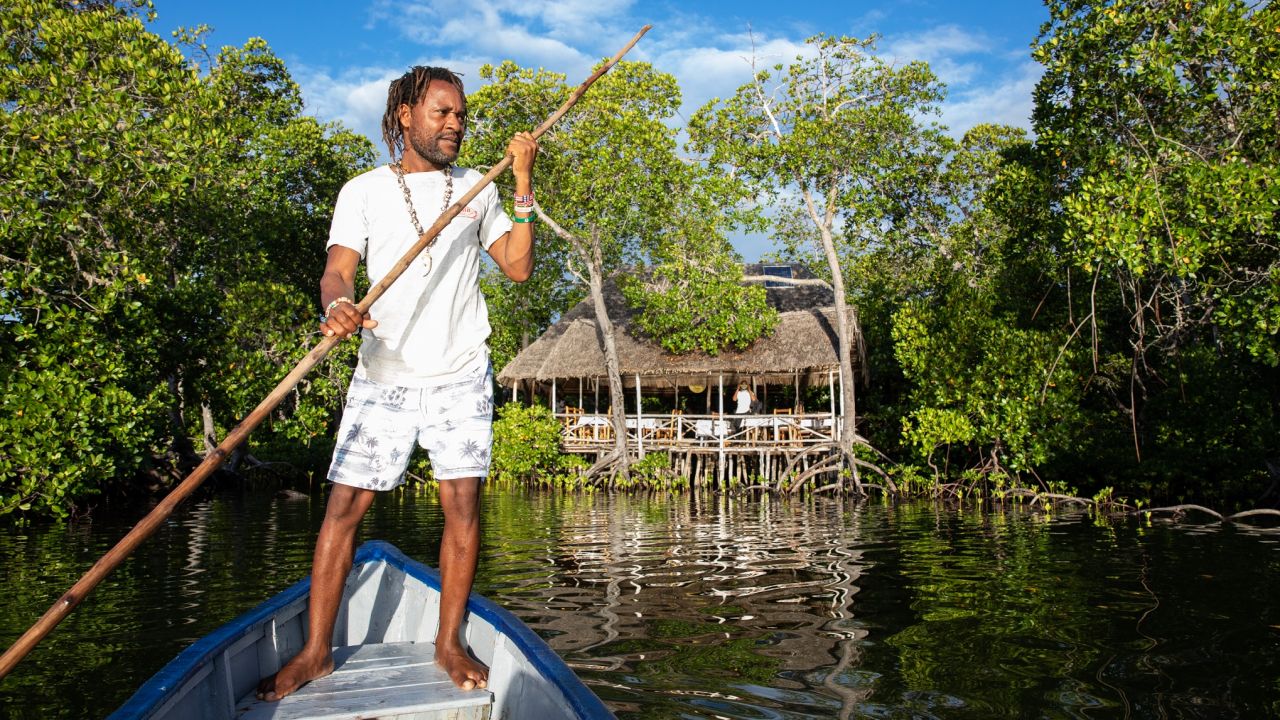
A community in Watamu, Kenya is built around a vibrant mangrove forest. Photo credit: © Erika Pineros.
In a world where we are often left uninspired by the outcomes of global convenings, we recently saw two remarkable landmark achievements in quick succession.
In Montreal in December, nearly 200 nations agreed on a framework to halt and reverse biodiversity loss, which included a widely visible “30×30” target to protect 30 percent of land and water by 2030. Three months later, nearly 200 nations signed the High Seas Treaty, a landmark agreement that introduced the possibility for new protections for the parts of the ocean that lie outside national borders.
These two moments are milestones that provide the teeth necessary to enforce protections for our oceans—a wellspring of life on our planet, a source of food for families around the world, and a powerful nature-based tool for mitigating and adapting to climate change.
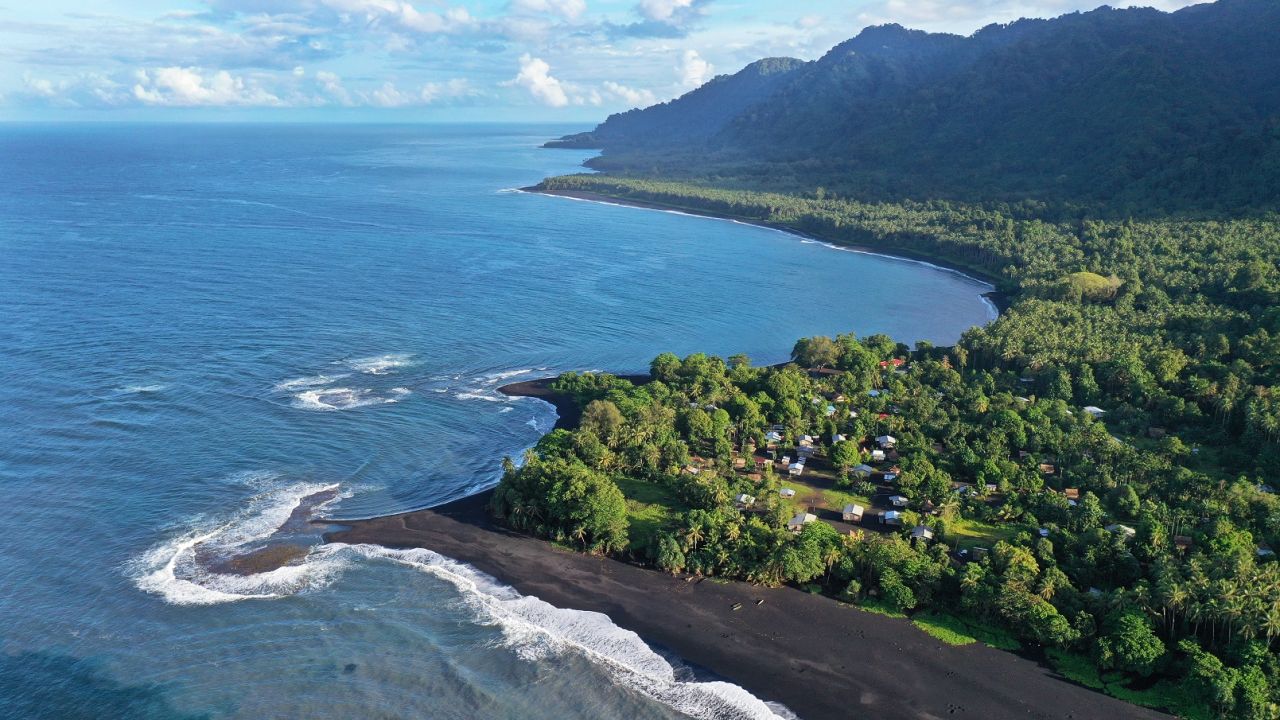
A Solomon Islands community in Baniata borders their coastal seas. Photo credit: Björn Svensson/WCS.
While conservation of the High Seas is essential to meet the biodiversity goals of 30×30, we must also prioritize areas that are of greatest value to both nature and people. This includes an essential but thin strip of ocean known as the territorial seas as defined by the United Nations Convention of the Law of the Sea. These waters, which extend 12 nautical miles from the coast, contain 70 percent of all ocean biodiversity.
According to the UN, nearly 2.4 billion people live within 100 kilometers of the coast. Close to one-fifth of them depend on small-scale fisheries, the vast majority of which are coastal fisheries critical for livelihoods. All of the world’s mangroves and sea-grass beds and 83 percent of coral reefs are found within these waters. Forty percent of the total global fish catch comes from small-scale fisheries. Simply put, these waters are vital to food security, livelihoods, and the climate resilience of communities around the world.
Given this incredible and unique symbiosis among marine biodiversity, productivity, ecosystem services, livelihoods and society, we suggest these waters should more aptly be called “community seas.”
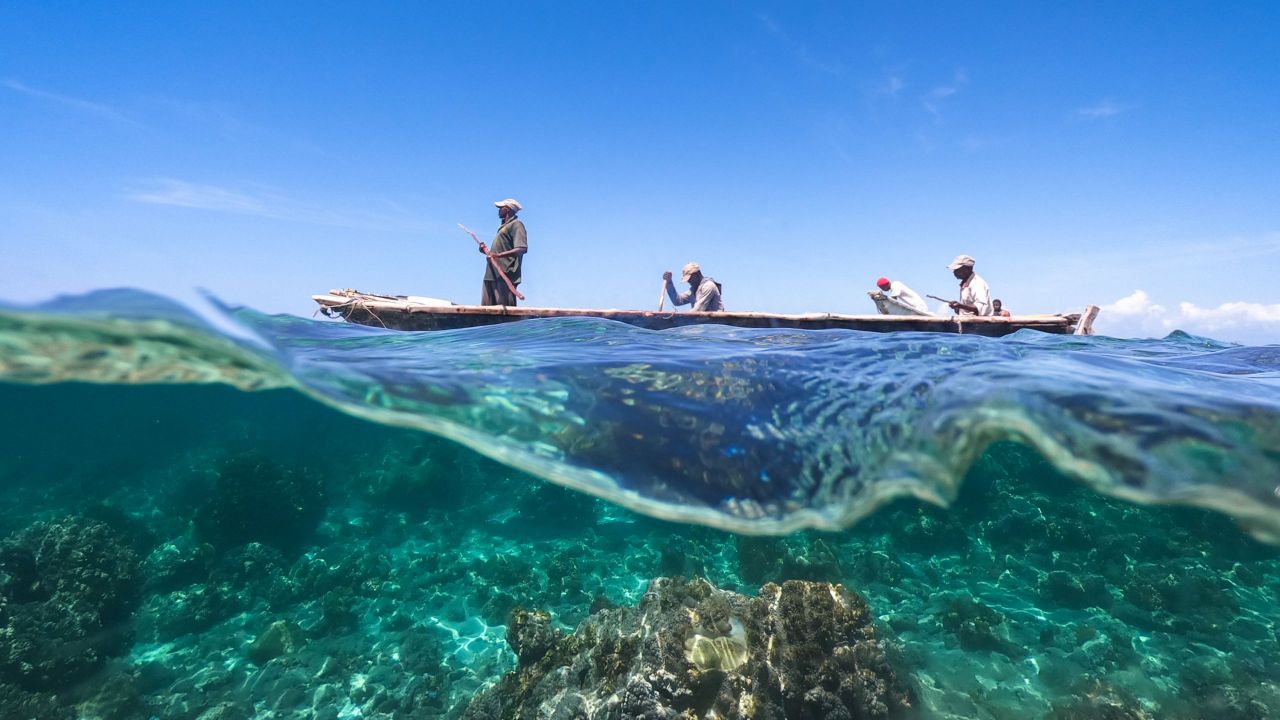
Fishers from the community of Mkwiro on the coast of Kenya use a traditional boat and gear to fish on a coral reef. Photo credit: © Erika Pineros.
Despite the value that far exceeds their size, these waters are often overlooked and poorly managed. They contain only 11 percent of Marine Protected Areas (MPAs) and less than 15 percent of ocean philanthropy is dedicated to community-based coastal habitat conservation and small-scale fishing issues, based on an estimate by CEA Consulting.
This is due in part to social and political hurdles that are as diverse as the countless communities and cultures bordering these seas. Rules around access rights and tenure run the gamut. The human rights of Indigenous Peoples and Local Communities (IPs and LCs), like the right to social and economic development or cultural rights, must be maintained. There is simply no one-size-fits-all solution.
Yet, protections and management are needed, and where they have been implemented well they have been shown to reap measurable benefits for people and planet. To safeguard community seas, we need inclusive, effectively managed MPAs and to recognize and support governance models that support community led conservation in the form of Other Effective area-based Conservation Measures, or OECMs.
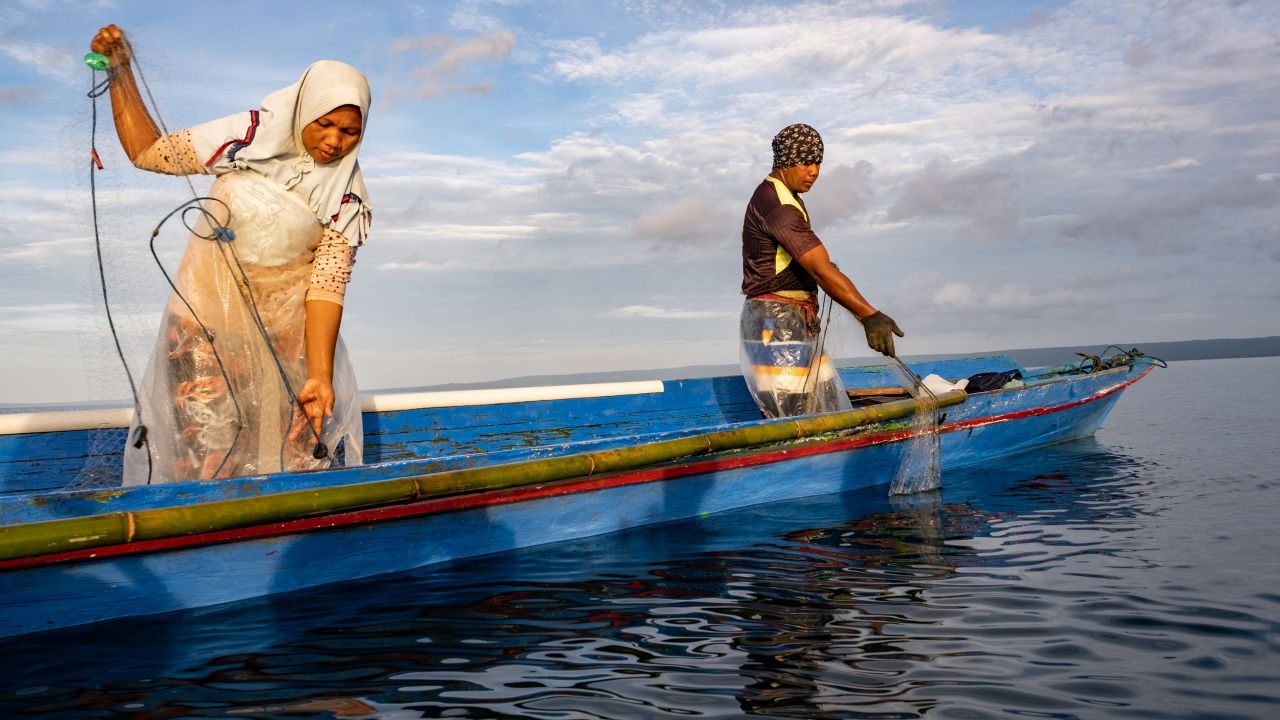
Rustian and Sugianto, wife and husband fishers, net fishing off the boast of their community, Pasi Kolaga, Indonesia. Photo credit: © Jason Houston/Rare.
While MPAs deliver results for nature and provide valuable ecosystem services to people, OECMs are also often designed with people and nature in mind, and thus are a key complement to MPAs. Marine OECMs include fully-protected marine reserves, areas off-limits to fishing, allowing fish populations to rebound in protected habitats. Most importantly, OECMs allow for decentralized and efficient adaptive management that can provide durability to both governance and associated conservation outcomes. This balanced approach delivers for people and nature.
Community led OECMs still must be designed in a manner that is equitable, inclusive, and reflective of the values and needs of IPs and LCs—those closest to the resource. Design and declaration must be led by local leaders, fishers, and their communities, unlocking the power of the too-often absent voices of women and youth.
Studies show that inclusive participation of local or Indigenous people in the management of their community seas leads to a greater increase in fish biomass than heavy-handed penalties. And as the FAO states, successful, long-term, positive change must originate from the fishers and communities themselves.
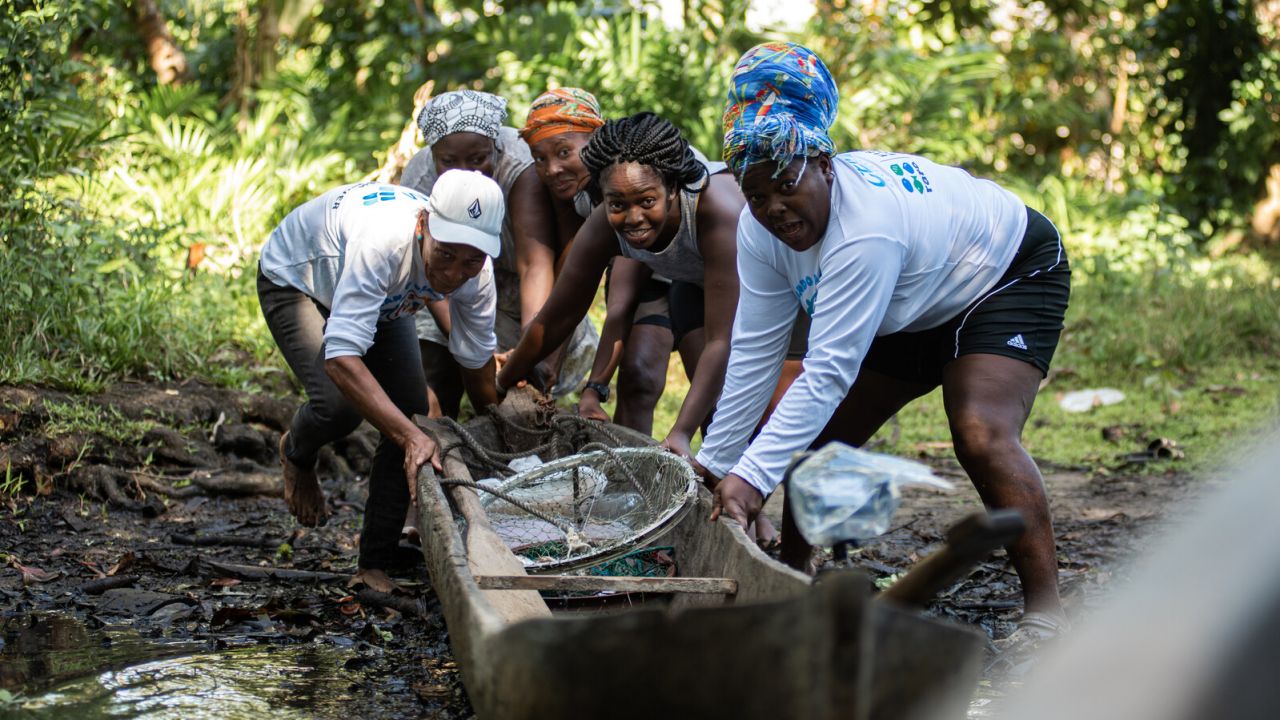
The Canoe Ladies, a self-organized group of 50 local women in Cocalito, a small coastal village in Honduras. The Canoe Ladies fish daily to provide food and economic security to their families. Photo credit: © Lorena Velasco/Rare.
Many countries are already tackling balancing protection with sustainable production. Coastal nations like Colombia and Mozambique have passed national legislation to protect coastal waters while centering the role of local communities in their management and use. They follow nations like Indonesia and the Philippines that have already embraced the community-based approach.
To maximize the potential of OECMs and protect the community seas, governments must drive policy change and translate the recent international commitments into updated national targets and strategies. Together with local leaders and communities, national governments should secure preferential rights for small-scale fishers through exclusion zones, enable community co-management, and enforce appropriately designed fishery regulations, while applying human-rights-based principles.
Protecting and effectively managing the community seas is difficult but critical to achieving the goals of 30×30. Coupled with larger-scale MPAs, OECMs offer a complete solution for ocean conservation. As the global community builds on the momentum of Montreal and the High Seas Treaty, our focus should turn to the community seas and deploying OECMs as a fair and equitable solution for people and nature.
